Section 1 – Advanced training in rational driving on safety regulations
1.1 Knowing, and making best use of, the characteristics of the transmission.
Understanding ‘torque’, ‘power’, ‘fuel consumption’ and the use of the rev counter
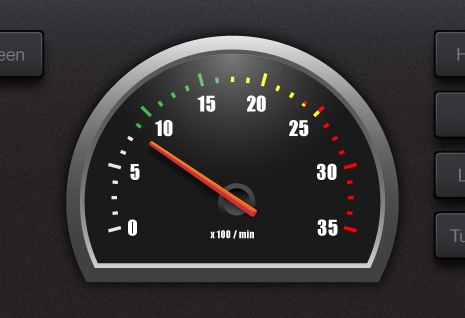
Almost without exception, all modern goods vehicles are fitted with a rev counter, and these are generally colour coded to make it easier for the driver to remain in the most economical rev band producing the best combination of power, torque and efficiency. Keeping the revs in the ‘green’ section means the vehicle is operating in the most fuel efficient mode.
Clutch
Double de-clutching is not necessary with a synchromesh gearbox and merely wastes fuel and increases wear on clutch surfaces.
Cruise control
Cruise control works with the vehicle’s electronic control systems and ensures that the correct amount of fuel is used for the given road and vehicle conditions. Proper use of the speed control facility can help reduce fuel consumption.
Speed limiter
Goods vehicles exceeding 7,500 kg first used from 1 August 1992 must have speed limiters fitted and calibrated to prevent the vehicle exceeding 56 mph. Gradually, most other goods vehicles exceeding 3,500 kg have been brought into the legislation. Goods vehicles exceeding 12 tonnes first used from January 1988 and goods vehicles over 3.5 tonnes but not exceeding 7,500 kg and first used after January 2005 must have a speed limiter fitted which limits the speed to 90 km/h (56 mph).
Speed limiters must be sealed to prevent tampering, and a plaque must be displayed in a prominent position in the cab clearly stating the speed limiter setting.
A speed limiter takes measurements from the various sensors on the vehicle and controls the fuel flow to prevent the vehicle exceeding the set speed. Again, this can contribute to better fuel economy and can also be used by the driver to avoid accidental breaches of any speed limits.
1.2 Knowing and understanding the safety features and controls of a vehicle
(hydraulic, vacuum and servo brake systems, retarders, etc.) and using that knowledge to control the vehicle and minimise wear and tear upon that vehicle. Understand the effects of inertia on a vehicle and how it may be used or overcome as necessary.
Kinetic energy
‘Kinetic energy’ is the energy, or power, that every moving object (vehicle) possesses. It is the natural energy which allows a vehicle to roll down and increase speed on a decline. The greater the weight of the vehicle and its load, the more force, or braking pressure, is needed to stop or control it. This kinetic energy needs to be overcome to slow the vehicle down to stop or for the purposes of controlling it when cornering.
This is particularly important to understand when driving a large goods vehicle where, for example in the case of a top weight articulated vehicle, the difference between an empty vehicle and semi-trailer combination and a fully laden vehicle could be around 25 or 26 tonnes. In simple terms, a laden goods vehicle will require much more effort and space to stop it than an empty one. This can be seen most clearly when travelling downhill, where relying solely on the brakes for a prolonged amount of time to slow the vehicle, can cause problems. The build-up of heat in the brakes can become so great the brake pads or discs lose their effectiveness. A situation known as ‘brake-fade’ and the reason why many large goods vehicles are fitted with supplementary braking systems e.g. engine or brake retarders. These supplementary systems will help control the speed of the vehicles leaving the main braking system cool for use when necessary.
The braking system
The braking systems fitted to large goods vehicles differ from those used by most lighter vehicles e.g. cars, which use a vacuum system where brake fluid is forced around the system opening the brake cylinders to apply the brakes. Large goods vehicles generally use air which is drawn in by a compressor driven by the engine. This air is stored in tanks (the brake reservoir or ‘air tank’) on the vehicle (and trailer where appropriate) and, when the footbrake is depressed, it allows air to be released from the tanks by the brake actuator which then operates the brake cylinders.

As can be seen from the very simplified system in the diagram above, there are many joins in this system where the air, which is under pressure, could leak out if the pipes etc. are not maintained in very good condition. As well as looking for defects, a good driver will listen for air leaks as they carry out their daily vehicle check. All vehicles which use air for the braking system will be fitted with air gauges so the driver can check there is sufficient air in the system to operate the brakes. If this pressure is low, then there is usually an audible warning as well to alert the driver of the lack of air pressure in the system. Without sufficient air in the system the vehicle brakes will not release.
Each braking system fitted to a motor vehicle has to meet certain minimum efficiency standards. In respect of the main service brake this is 50%, in respect of any secondary braking system it is 25% and in respect of the parking at least 16% efficiency.
Use of the brakes
The brakes should always be applied smoothly and progressively. Unnecessarily sharp use of the brakes could cause the wheels to lock meaning the driver loses control of the vehicle. Harsh braking can also cause the load on the vehicle to move as a result of the kinetic energy within that load. In an emergency situation however, where firm sharp application of the brakes may be required, wheel locking may be almost inevitable. To overcome this, modern vehicles are generally fitted with anti-lock braking systems (A.B.S.). This is an electronic device which incorporates sensors on each wheel of the vehicle. These sensors anticipate when the wheel is about to lock up, and then will very quickly release and reapply the brakes many times a second, allowing the vehicle to be steered whilst under extreme braking conditions.
To check the correct functioning of the A.B.S. system vehicles will have a warning lamp on the dashboard which will be illuminated when the vehicle is first started. If the vehicle has the ability to pull a trailer there will be a separate warning lamp for the trailer. These dashboard lamps will not go out until the vehicle has reached approximately 10 km/h (6 mph). If the trailer is fitted with A.B.S. then it may have a green light on the headboard which will be illuminated any time the footbrake is applied to show the system is working correctly.
As well as the air braking system, large goods vehicles are generally fitted with an endurance braking system commonly referred to as retarders. These are systems that control the speed of the vehicle without using the conventional braking system.
These systems are there to reduce the brake fade caused by the heat generated through friction between the brake shoes/pads and the brake disk/ drum during prolonged braking such as long hill descents mentioned above.
Endurance braking systems work by applying resistance by way of the transmission to the drive wheels. This is achieved by increased engine braking, exhaust braking or transmission mounted electromagnetic or hydraulic devices. The advantages of these systems are that when the brakes do need to be used, they are cool and efficient allowing the vehicle to be brought to a halt under control.
The use of retarders also have a beneficial effect on fuel economy. When using an exhaust brake the fuel supply to the engine is cut off which has two effects on the engine. Firstly, the engine braking is increased slowing the vehicle and, secondly, the engine is working hard as a compressor, so the combustion chambers become much hotter so when fuel is re-introduced into the combustion chamber it is atomised more efficiently than in a cooler engine.
These retarders may be operated integrally with the footbrake, usually being controlled by the first part of the footbrake travel, or as an independent system operated by hand or foot. Retarders operated as an independent system usually have a switch control allowing the driver to select the appropriate degree of retardation.
1.3 Objective: ability to optimise fuel consumption
Optimisation of fuel consumption by applying knowledge of points 1.1 and 1.2.
Obtaining the best fuel consumption possible benefits the vehicle operator in terms of reduced running costs and hence greater profit and also benefits the environment in terms of a reduced carbon footprint. Over revving the engine, staying in a lower gear longer than necessary or allowing the engine to idle for long periods all dramatically increase fuel consumption.
Eco-safe driving is about driving in a way that reduces the effects of your journey on the environment. It is also about making all journeys more comfortable for your passengers and reducing fuel bills.
The major factors affecting a vehicle’s fuel consumption are:
- how a driver uses their brakes
- how a driver accelerates
- the speed at which the vehicle is driven
- the weight and wind resistance of your vehicle, and
- the condition of the vehicle tyres
Benefits of safe and fuel efficient driving to you and others

Checks to improve environmental friendliness or efficiency of your vehicle
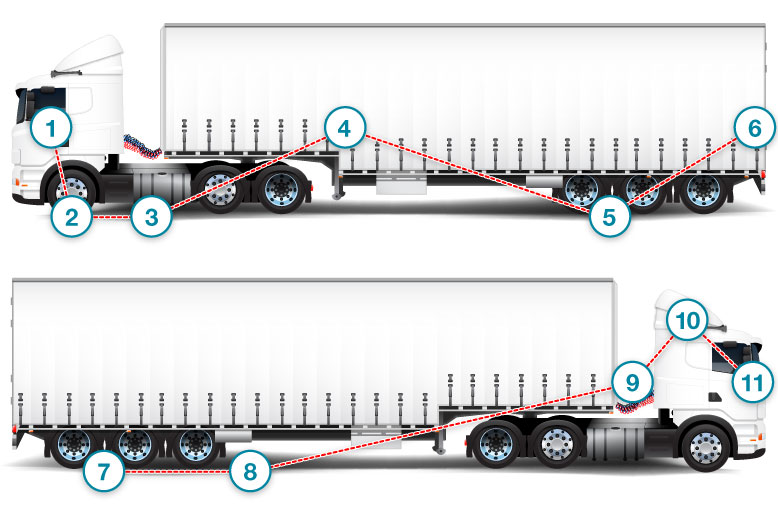
- In cab instrument check
- Tyres (particularly inflation) correctly inflated tyres offer less rolling resistance and contribute to fuel efficiency
- Visual emissions (smoke) can be an indication that the engine or fuel system needs attention
- Condition of curtain if fitted - loose or torn curtains dramatically increase wind resistance and reduce fuel efficiency
- Trailer tyres (particularly correct inflation) - as for the vehicle itself
- Rear doors (closed correctly)
- Binding brakes – will make the engine work harder to counteract the braking effect
- Listen for air leaks (from brakes or suspension)
- Cab/trailer gap
- Cab air deflector (set to correct angle to suit trailer)
- All levels (water, oil, etc.)
Safe system of vehicle control
- Collect all relevant information
- Select appropriate position in the road
- Choose appropriate speed
- Select appropriate gear for speed and manoeuvre, and
- Accelerate or brake accordingly when safe
Forward planning
Every time a driver has to change down a gear, fuel consumption increases. Looking ahead and planning your approach will decrease the need for gear changing and thus increase fuel efficiency. In particular, moving a heavy vehicle away from a standstill will use considerably more fuel than if the vehicle is kept moving, even if it is only moving at a walking pace.
Awareness of the actions of other road users enables early gear selection and safe positioning of the vehicle to make good progress. Not concentrating on unfolding traffic situations leads the driver into late braking, poor positioning and increases the need for acceleration all of which lead to a decrease in fuel efficiency.
Use the vehicle’s momentum gained while going downhill to get it up the next incline.
Use of gears
The fewer gear changes made by the driver means less physical effort on their part and less fuel being used. Skip gears by using the ‘block change’ method of gear selection wherever possible.
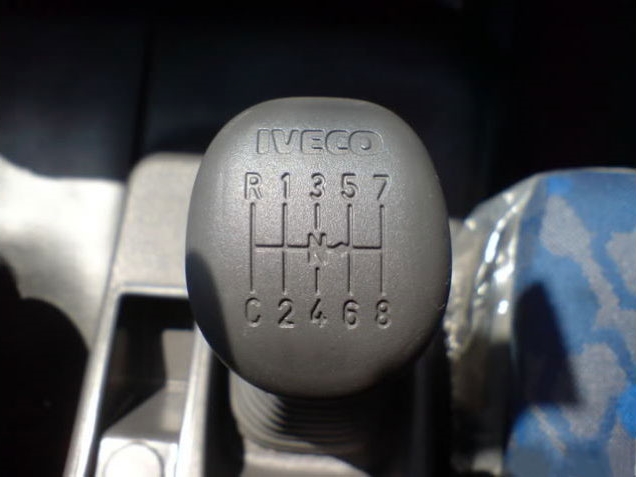
With an eight-speed gearbox as above, it would be possible to change from, for example, 2nd to 4th especially if the vehicle was either lightly laden or going downhill. Always try to use the highest gear possible without making the engine ‘struggle’.
Defensive driving techniques are employed by the good driver to ensure the safety of themselves, their passengers and other road users. Defensive driving is about making good use of observation, anticipation and vehicle control to help the driver be prepared for the unexpected.
A safe system of vehicle control means that the driver is always driving:
- at the correct speed
- in the correct gear, and
- in the correct position on the road (in relation to the road itself, road and lane markings and other traffic)
A driver should always drive:
- responsibly
- carefully, and
- with consideration for other road users
Keeping a safe separation distance between you and the vehicle in front will give you time to stop safely if you need to. The weight of a large goods vehicle usually means that it takes longer to stop than a car would in the same conditions.
Lift axles
Lift axles are inherently more complicated and therefore require more servicing, but they do give the advantage of less tyre wear (when the wheels are lifted). If it is decided to fit lifting axles, a decision needs to be taken as to where on the vehicle they are fitted and whether they need to be steered or non-steered axles (similar argument) and whether they are fitted with single or double tyres axles (more weight capacity against more tyre costs).
Lifting axles can also prevent tyre scrub when a vehicle is manoeuvring in tight spaces – a feature will save on tyre costs.
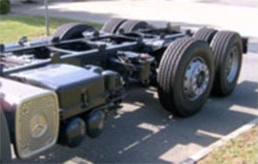
1.4 Understand how to load a vehicle safely and with regard to the relevant legislation and vehicle capacity.
Penalties for using an unsafe vehicle or a vehicle with an unsafe load in the UK
A person is guilty of using a vehicle in a dangerous condition if they use, or causes or permits another to use, a motor vehicle or trailer on a road when the purpose for which it is used or the weight, position or distribution of the load, or the manner in which the load is secured is such that the use of the motor vehicle or trailer involves a danger of injury to any person.
The maximum penalty for this offence is currently £5,000 plus endorsement of the licence and/or disqualification from driving.
Vehicle plates
All goods carrying vehicles will have a ‘plate’ giving details of its maximum axle, gross and train weights. This may be a ‘manufacturers’ plate or a ‘Ministry’ plate. The manufacturers plate is often referred to as the ‘design weight’ plate as it gives the maximum weights at which the manufacturer deems the vehicle can operate.
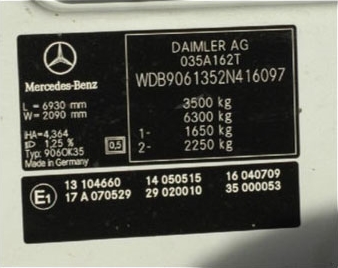
On the above plate we can see that the first weight (3,500 kg) gives the maximum ‘gross’ weight for the vehicle. Gross weight is the maximum legally permitted weight for the vehicle together with its load, fuel and driver.
The second weight (6,300 kg) is the maximum ‘train’ weight. Train weight is the total weight of the vehicle, its load, driver and fuel PLUS the total weight of any trailer and its load towed by the vehicle.
The third weight listed (1,650 kg) is the maximum weight allowed over the first axle.
The last weight listed (2,250 kg) is the maximum weight allowed on the second axle. You may notice that if you add the first and second weights together, they come to more than the maximum gross weight allowed. This is to give the driver a little more flexibility as to where they place the load in relation to each axle.
Most goods vehicles over 3.5 tonnes are subject to Plating and Testing and must be submitted to DVSA (the Driving and Vehicle Standards Agency) for testing to ensure that they conform to all the relevant legislation and then ‘plating’ where they are given a ‘Ministry Plate’ as shown below.
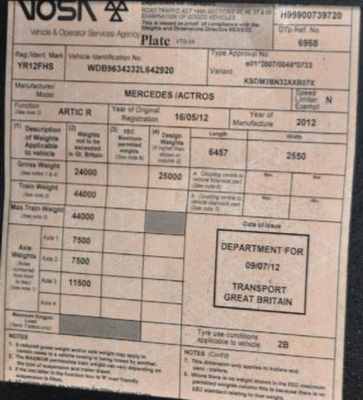
On the above plate we can see that the first weight (24,000 kg) gives the maximum ‘gross’ weight for the vehicle. Gross weight is the maximum legally permitted weight for the vehicle together with its load, fuel and driver. This is the total amount of weight which may be transmitted to the road surface by all the wheels of the tractor unit, in the case of an articulated tractor unit this will include a proportion of the weight of the semi-trailer it is towing.
The second weight (44,000 kg) is the maximum ‘train’ weight. Train weight is the total weight of the vehicle, its load, driver and fuel PLUS the total weight of any trailer and its load towed by the vehicle.
The third weight listed (also 44,000 kg in this case) is the maximum train weight allowed when the vehicle is carrying out ‘combined transport operations’. ‘Combined transport operations’ are where the load is carried on a combination of different types of transport, typically the load will be carried for part of the journey on rail (or inland waterway) and part by road.
The fourth weight listed (7,500 kg) is the maximum weight allowed on the first axle.
The fifth weight listed (7,500 kg) is the maximum weight allowed on the second axle.
The sixth weight listed (11,500 kg) is the maximum weight allowed on the third axle. 11.500 kg is also the maximum weight for a sole drive axle in the UK.
Vehicle maximum weights in the UK
Maximum gross weight for rigid vehicles in the UK:
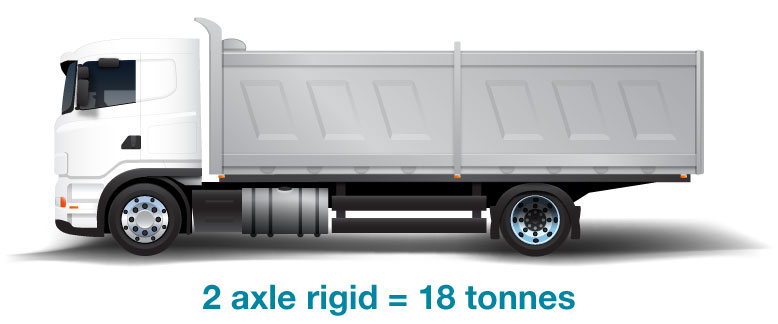
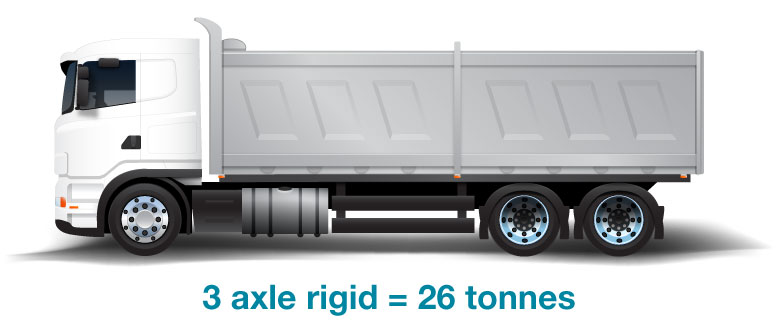
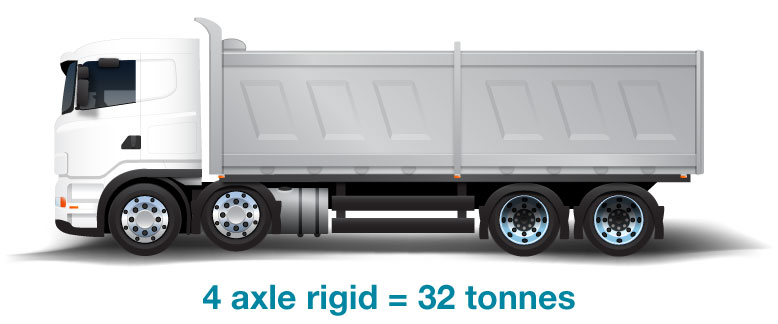
Maximum train weight for rigid vehicles drawing a trailer in the UK:

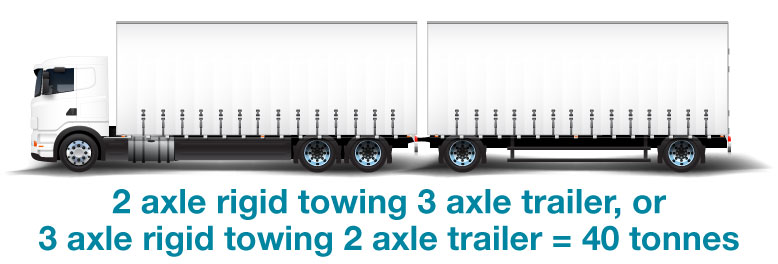

Maximum train weight for articulated vehicles in the UK:


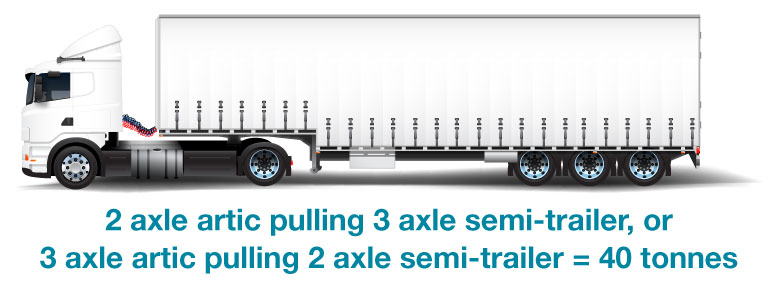
All of the above rely upon certain minimum axle spacings which candidates for the Module 2 exam do not need to know.
Positioning a load on a vehicle
Care must be taken to ensure that the weight carried on any vehicle is distributed over that vehicle so as to prevent any individual axle or bogie being overloaded. This is especially important when a vehicle is being operated whilst only partly laden e.g. a vehicle on a multi-drop exercise may start out loaded evenly. If the driver unloads the vehicle from the rear and neglects to re-adjust the remaining load, the front axle could become overloaded even where the gross weight is well inside the permitted weight for that vehicle. A vehicle loaded in this way may become unstable because the braking efficiency on each axle will become impaired either because there is more weight being carried on it than it was designed for or because there is insufficient weight on a particular axle relative to the others that it does remain in contact with road.
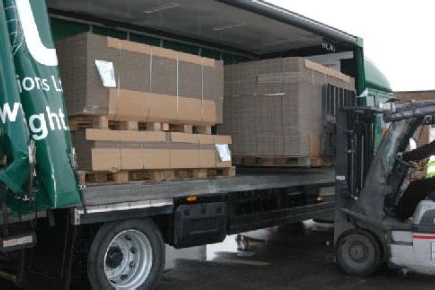
To calculate where any given load should be positioned on the vehicle, we need to know three things:
- the weight of the load;
- the distance the load is from one of the axles; and
- the wheelbase of the vehicle.
This gives us the formula Distance × weight of load ÷ Wheelbase
If we were to place a 12 tonne load on a rigid vehicle with a 3 metre wheelbase and placed that load 1 metre from the rear wheel and applied the above formula, we would have:
1 × 12 ÷ 3

Calculation of weight distribution
The answer to the above equation is 4 which tells us that 4 tonnes of the load would be over the front axle and that 8 tonnes of it would be over the rear axle.
If we carried the same load on the same vehicle but positioned it 2 metres from the rear axle, the resulting equation would be:
2 × 12 ÷ 3
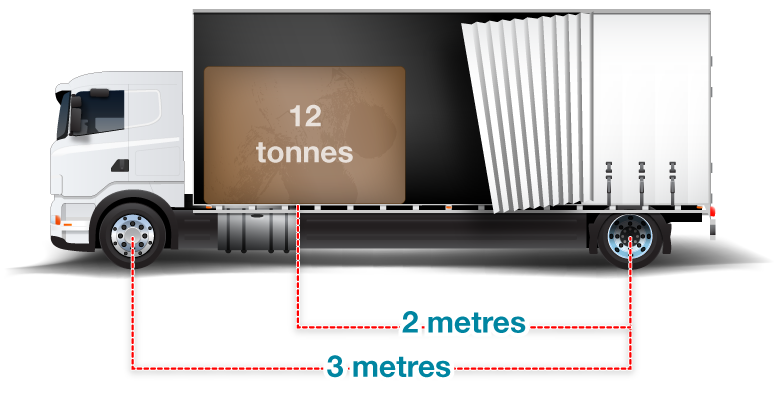
The answer to that equation would now be 8, meaning that we now have 8 tonnes over the front axle and only 4 tonnes over the rear.
If the vehicle in question was a typical 17 tonne rigid it would probably have a front axle plated at 7 or 7.5 tonnes and a rear axle plated at 10.5 tonnes. We already have an overloaded front axle and we have not actually taken into account the weight of the vehicle itself. Clearly the vehicle must be re-loaded in line with the first example rather than the second.
Payload
In order to calculate the payload of any given vehicle, we need to understand certain terms, viz:
unladen weight (U/W):
‘The weight of a vehicle or trailer inclusive of the body and all parts (the heavier being taken where alternative bodies or parts are used) which are necessary to or ordinarily be used with the vehicle or trailer when working on a road, but exclusive of the weight of water, fuel or accumulators used for the purpose of the supply of power for the propulsion of the vehicle or, as the case may be, of any vehicle by which the trailer is drawn, and of loose tools and loose equipment.’
Road Vehicles (Construction & Use) Regs 1986, Reg 3(2)
kerbside weight:
‘The weight of a vehicle when it carries:
- in the case of a motor vehicle
- no person, and
- a full supply of fuel in its tank, an adequate supply of other liquids incidental to its propulsion and no load other than the loose tools and equipment with which it is normally equipped
- in the case of a trailer, no person and is otherwise unladen.’
Road Vehicles (Construction & Use) Regs 1986, Reg 3(2)
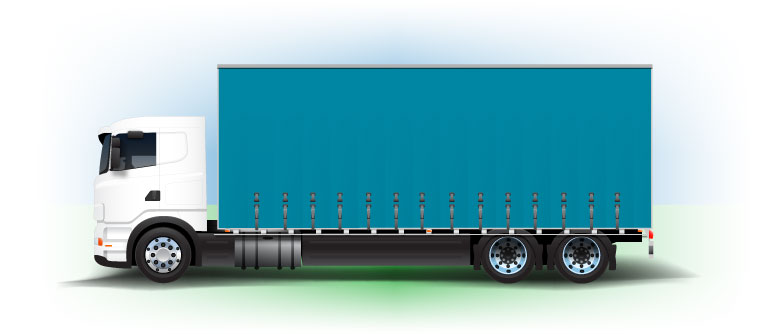
The pay load weight, or the load you can put on the vehicle, is the gross weight of the vehicle minus the ‘tare’ weight of the vehicle. The tare weight of the vehicle is made up of the kerbside weight of the vehicle plus the weight of the driver and fuel.
The tare weight can easily be found by weighing the vehicle without a load but with the driver still in the cab on a weigh bridge.
Once you have found the tare weight you take that figure from the ‘gross plated weight’ which gives you your pay load. So, if your tare weight is 18 tonnes and your gross plated weight is 44 tonnes then your payload is 44 – 18 = 26 tonnes. This is the weight you can legally carry on the vehicle.
Vehicle dimensions
Maximum height
There is no maximum height for a goods vehicle in the UK. All unmarked bridges in the UK will have a minimum height of 16 feet 6 inches
All vehicles with an overall travelling height in excess of 3 metres must have the maximum height of the vehicle displayed, in feet and inches, inside the cab so that it is clearly visible to the driver.

If a bridge strike occurs, it should be immediately reported to Network Rail using the telephone number on the identification plate. If no plate is provided the strike should be reported to the Police by telephoning 999.
Maximum length in the UK
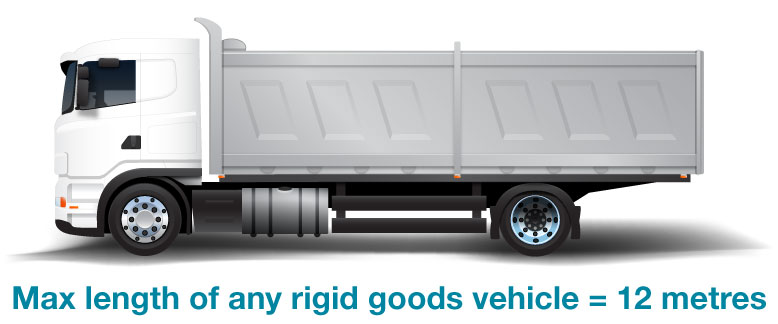


Maximum width in the UK
| Vehicle type | Maximum width |
|---|---|
| Locomotive | 2.75 metres |
| Refrigerated vehicle | 2.6 metres |
| Any other vehicle | 2.55 metres |
Overhanging loads
Rearward and forward projections
Loads are permitted to extend rearwards by up to 1 metre, and forwards by up to 2 metres, without the need for any additional markings or lights. Beyond those limits, the loads need to comply with the additional requirements laid out in the table below:
| End marker | Side markers | Additional side markers | Attendant | Notification to police | |
|---|---|---|---|---|---|
| Rear projection | |||||
| 1–2 metres | Adequate marking† | Adequate marking† | |||
| 2–3.05 metres | • | • (if exceeding 3 m) | |||
| 3.05–5 metres | • | • | • | • | |
| Over 5 metres | • | • | • | • | • |
| Forward projection | |||||
| 2–3.05 metres | • | • | • | ||
| 3.05–4.5 metres | • | • | • | • | |
| Over 4.5 metres | • | • | • | • | • |
† Made clearly visible to other road users (within a reasonable distance) to the rear and to the sides.
Side projections
Similarly, there are no requirements for extra markers if the width of the load does not project more than 305 mm on either side of the vehicle and the overall width does not exceed 2.9 metres.
Over 2.9 metres and up to 3.5 metres (and any projection over 305 mm), side marker boards, as above, will need to be fitted and the police notified (2 days prior) of the journey.
Over 3.5 metres and up to 5 metres requires side marker boards, police notification (2 days prior) and the presence of an attendant on the vehicle. Over 4.3 metres requires the observance of special speed limits too.
Over 5 metres and up to 6.1 metres requires side marker boards, police notification (2 days prior), the presence of an attendant, approval from DfT and the observance of special speed limits.

Abnormal loads
An abnormal load can be described as a vehicle that:
- weighs more than 44 tonnes
- has an axle load of more than 11.5 tonnes
- is more than 3 metres wide; and/or
- is more than 18.75 metres long
The law requires the haulier to give a minimum of two clear days’ notice to the police, Highways Authority and bridge owners before moving an abnormal load.
Special Types General Order (STGO)
STGO is a general order made under section 44(1) of the 1988 Road Traffic Act that makes provision for authorising certain types of vehicles to be used on roads even where they do not fully comply with the normal Construction and Use requirements. The Order specifies the requirements that must be met by vehicles seeking to rely on such authorisation.
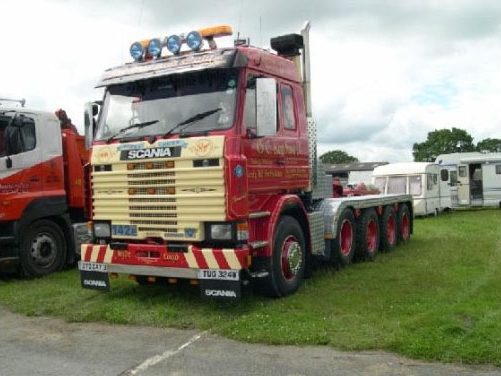
There are three categories of vehicle within STGO rules:
- Category 1 - with a maximum permitted weight of 50,000 kg on 6 axles or 46,000 kg on 5 axles (Generally no escort required)
- Category 2 - with a maximum permitted weight of 80,000 kg (Private escort generally required), and
- Category 3 - with a maximum permitted weight of 150,000 kg. (Police escort required)
Private escort such as this may be used for Special Types Category 2 vehicle
Two essential requirements must be satisfied when loading vehicles:
- The load must be distributed so that the maximum permitted gross vehicle weight and axle weights are not exceeded, and
- The load centre of gravity is kept as low as possible to achieve maximum stability when the vehicle is braked or changes direction
Speed limits for Special Types Vehicles
The following groups of vehicles have speed conditions or in use limits specifically applied by the order irrespective of other enactment:
| Motorways | ‘A’ road | Other road | |
|---|---|---|---|
| Class of vehicle | mph (km/h) |
mph (km/h) |
mph (km/h) |
| Abnormal indivisible load Cat 2 or 3 | 40 (64) |
35 (56) |
30 (48) |
| Motor vehicles or trailers carrying loads in excess of 4.3 metres wide | 40 (64) |
35 (56) |
30 (48) |
The driver and any other persons involved in any loading or unloading operation should wear high visibility clothing, hard hat and protective boots. Other Personal Protective Equipment should be used as defined in any site-specific rules.
It is important that vehicles are loaded safely to avoid injury to the operator, a member of the public or other third party.
- Drivers must comply with any specific site safety rules
- Appropriate Personal Protective Equipment (PPE) must be used as defined in the site or operation safety rules
- Training and/or instruction and monitoring of the driver must be carried out to ensure safe practice during loading operations
- Adequate signage should be in place during the loading operation to warn others of the hazards
- Where possible, loading should be separated from other operations or heavily trafficked areas
- Compliance with the site safety rules should be monitored
- The loader and associated equipment must comply with and be maintained to minimise the possibility of failure (see Lifting Operations and Lifting Equipment Regulations (LOLER) & Provision and Use of Work Equipment Regulations (PUWER) legislation)
- Loader stabilisers (chocks, dunnage or specialized cradles, etc.) must be used where appropriate e.g. when loading round timber
- Where trailers are left for subsequent loading, the landing legs on the trailer should be positioned on a suitable bearer, and
- Any stacked loads must be left safe after loading or partial loading

When using a forklift truck, make sure your operator is properly trained.
1.5 Understand the forces affecting vehicles in motion
calculation of payload of vehicle together with calculation of total volume, load distribution, consequences of overloading the axle, vehicle stability and centre of gravity.
What are the forces that affect a moving vehicle and its load?
- Thrust – this is the force pushing the vehicle forward. In the case of a motor vehicle this will come from the engine through the transmission which eventually acts upon the wheels causing them to turn
- Drag – this is the force created through wind resistance and acts like a form of friction. The more surface area the vehicle offers to the air, the greater the force of drag upon the vehicle. This is why Formula 1 racing cars have wings and other aerodynamic aids to allow it to reduce the effects of drag and therefore go faster. With a truck the same principles are used when we fit roof deflectors, ‘teardrop’ shaped trailers and side skirts etc., but it is fuel economy rather than speed which is the goal. The other major contributor to drag is the braking system
- Weight – the weight of the vehicle and its load will push it into the ground surface and increase the friction between the wheels of the vehicle and the ground
-
The reactive force from the ground – the harder and smoother the ground on which the vehicle is standing, the less energy is lost from drag at the wheels, hence the engine will need to work less to get vehicle moving or keep it moving. This can be seen if we tried to push a vehicle along soft ground where the vehicle will tend to sink into the surface, rather than skim along the top as it would if that same ground were hard. However, friction can also be an issue: If the road surface is icy, tyre grip will be substantially reduced, and the wheels may have difficulty imparting the engine’s thrust to the ground.
 Thrust | Weight | Reactive force | Drag
Thrust | Weight | Reactive force | DragIf the forces of thrust and drag are equal, then the vehicle will move at a constant speed. Where thrust exceeds drag the vehicle will accelerate and where drag exceeds thrust, the vehicle will decelerate
-
Centrifugal force – this is the force that pushes an object (e.g. a vehicle or its load) out from the centre:
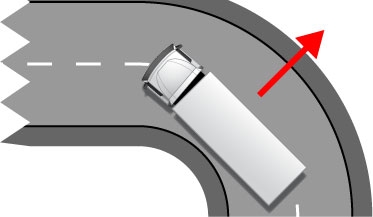 Centrifugal force illustration
Centrifugal force illustrationThis is particularly important when driving a large goods vehicle as not only will the vehicle be pushed to the outside of a corner if the driver goes too fast but also the load, if not properly restrained, may move and fall from the vehicle
- Wind (particularly high sided vehicles) – side winds can exert a considerable amount of energy (or force) on a high sided vehicle particularly when that vehicle is lightly loaded or empty. Drivers of high-sided vehicles must take special care when driving over bridges or exposed sections of road in conditions of high winds. Drivers of curtain-sided vehicles may be best advised to open the curtains and tie them back securely when travelling empty in high winds as this will lessen the impact of any sudden bursts of wind
Load stability
When loading a vehicle, a driver must consider the best way to organise the load and how to secure it to ensure that items don’t move whilst the vehicle is in motion. Generally, the weight of any load should be distributed evenly over the axles to increase stability of load and to ensure that individual axles are not overloaded. Ropes, straps or other suitable equipment should be used to keep the load secure.
Any sudden braking, steering action or acceleration can cause any load on a vehicle to become unstable with consequent risk of loss of control of that vehicle. Sudden acceleration can make a load shift to the back of the vehicle and harsh braking may make the load move forward. This in turn can cause the vehicle to skid by the sudden transference of weight to the front of the vehicle.
Increasing the speed of a vehicle increases the force of any impact involving that vehicle. Increasing the force of any impact increases the likelihood of injury of death to any persons involved in that impact.
Increasing the weight of a vehicle also increases the force of an impact and correspondingly increases the risk of injury or death to any persons involved in that impact. A pedestrian hit by a cyclist is more likely to survive without serious injury than one hit by a large vehicle as both the speed and the weight of the vehicle will be considerably more.
Increasing the distance your vehicle has to travel between the time it takes from first application of the brakes to the point of impact increases the ability of the vehicle to slow down or stop, decreasing the force of the impact and correspondingly reducing the likelihood of death or serious injury to persons.
‘Only a fool breaks the TWO second rule!’
A person being hit by a bicycle stands much less chance of being killed or seriously injured than one hit by a truck as the bicycle will weigh much less and will not be travelling at such speed.
The role of the enforcement agencies
A DVSA (Driver and Vehicle Standards Agency) examiner and certain authorised police officers are empowered to inspect a vehicle for the purposes of ensuring that it is roadworthy. That person also has the power to prohibit the use of a vehicle found to be in an unroadworthy condition. An examiner may also direct a vehicle to a place to be inspected or repaired. Where a vehicle is found to have a serious fault, it would be given a PG9 notice which effectively prohibits its use until the fault is remedied. Once remedied, the PG9 notice must be ‘lifted’, or cleared, by an authorised examiner.
Enforcement forms:
- PG9 – Prohibition notice – mechanical defect
- PG9ABC – combined refusal to lift prohibition, delayed prohibition and exemption from certain conditions form – replaces the previous separate PG9, PG9B and PG9C forms; A delayed prohibition might not come into force for a period of time (maximum 10 days) – it has the effect of suspending the PG9
- PG9B – Allows a vehicle subject to a PG9 to be moved under prescribed conditions often to a prescribed place
- PG9D – A continuation sheet where the list of defects will not fit on the PG9 ABC
- PG10 – A removal of a PG9 Prohibition notice
- PG35EC – minor defects found which would not warrant the issue of a prohibition notice. DVSA will send a copy of this form to the relevant Traffic Commissioner but there is no need for the operator to write separately to the TC
- TE160 – Prohibition for overweight vehicle, and
- TE160DH – Prohibition for drivers’ hours offences
1.6 Understand the different types of packaging and pallets and main categories of goods
Understand the need for securing, clamping and securing techniques, use of appropriate securing devices and the use of handling equipment.
The Euro pallet
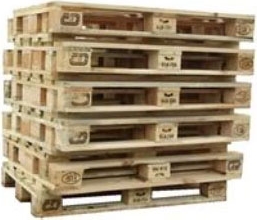
This is a pallet which conforms to the Euro standard in that its dimensions are:
| Dimension | Measurement (mm) |
|---|---|
| Length | 1,200 |
| Width | 800 |
| Depth | 144 |
Intermediate Bulk Containers (IBCs)
Intermediate bulk containers (IBCs) are rigid, semi-rigid or flexible portable packagings generally with a capacity of up to 3 cubic metres and are designed for mechanical handling. They range in size but are generally between 700 mm and 2,000 mm in height. The length and width of an IBC is usually dependent on the country’s pallet dimension standard.
IBCs may carry liquid, granules, or powders, and may be fitted to a pallet type base or with straps for handling by a forklift truck. IBCs must be securely loaded on the vehicle by chains, straps, or clamps. They should be inspected before loading, to ensure that they are in good condition and that no leakage is taking place.
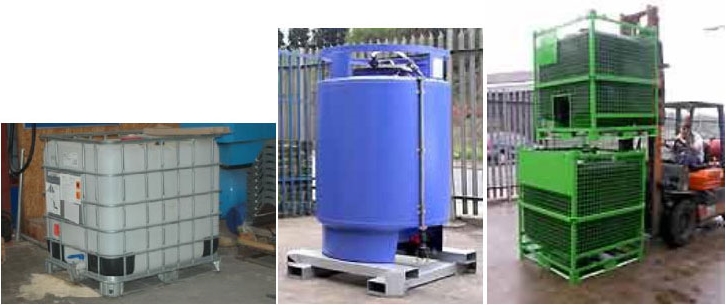
Securing loads
It is essential that loads are secured with the correct restraining equipment.
In general terms any load restraint system should be able to withstand the following:
- 100% of the weight of the load in a forward direction
- 50% of the load in a rearward direction, and
- 50% of the load in a sideways direction
All equipment used for securing loads should be regularly inspected for wear or damage. Such inspections should be in accordance with any manufacturers’ instructions. Special attention should be paid to webbing and rope to ensure that there is no visible deterioration such as fraying due to constant use. If there is any doubt as to whether the equipment is serviceable, it should not be used.

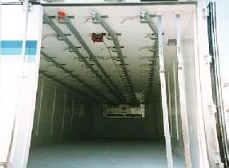
When using trailers such as those above, it is essential that the load is ‘locked off’ on each rail to prevent movement of the load under braking or acceleration. This ‘pendulum’ effect could adversely affect the handling of the vehicle. Tankers carrying liquid or other fluid loads are also subject to the pendulum or ‘wave’ effect. This can often be seen when a tanker comes to a stop and the vehicle can be seen to be rocking as the load continues to move under the ‘wave’ effect.
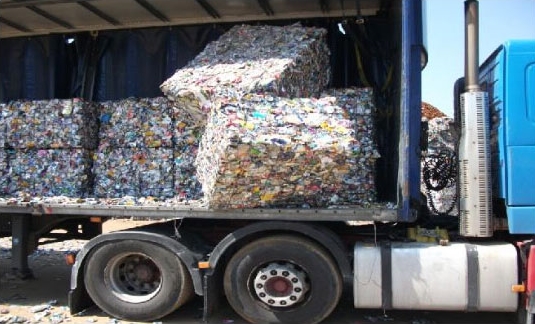
Never rely on the curtains of a curtain-sided vehicle to restrain any load (see below for EN 12642 XL rated vehicles).
Ropes or webbing are never a safe method of securing steel plate or girders as they allow too much flex caused by vehicle movement and are also easily cut by the steel itself.
Curtain-sided trailers
Curtain-siders are widely used in the road transport industry. Although there are no hard and fast rules for using curtains, the following ‘Best practice’ guide will help ensure that drivers and others are protected from injury whilst using the equipment.
Opening the curtain:
- Release the curtain pole tensioner at one end then undo buckle/strap nearest the curtain pole, then release and remove end pole
- Remove rest of buckles in order, keeping your body behind fastened buckles at all times (this way, you won’t be in the way of any load that falls)
- Stand at the end still attached, grasp two buckles of curtain and pull backward to open. Don’t try to slide the whole curtain at once – do it in sections
- Remember – Roof support poles, where fitted, are under considerable tension, so when releasing a pole, do NOT stand in front of it – stand beside it so you’re well clear of the hinge swing area
- Use your body weight to do the work – as with any manual handling activity, avoid twisting your body
If you have to move a roof support to get a pallet onto the bed of the vehicle, only move one at a time. If both are released on one side at the same time the roof will sag, and you will then need to lift the weight of the roof to get the support back in place. If it is necessary to move a roof support pole do not be tempted to leave the curtain buckles done up around it because this will increase the downward pressure on the roof support and could cause it to swing out and injure someone. It may also be impossible to get the roof support locked back into position with the tensioners still done up as this increases the downward force.
Securing the curtain:
- Ensure roof support poles are locked in correctly
- Close curtain by securing a curtain pole one end, then close curtain towards the other end (usually towards tensioner end)
- Secure the remaining curtain pole into tensioner
- Wind the tensioner up until curtain is very taut between the curtain poles, and
- Fasten ALL curtain buckles
Load security for XL rated vehicles

Most curtain-sided vehicles must use additional suitable load restraint(s) to prevent loads from moving during transit. The curtains fitted to these vehicles are designed for weather protection only.
However, vehicles and trailers built to the European Standard EN 12642 XL are the exception to this rule. New European guidance (still in draft 2014) states that vehicles built to the XL standard will meet the 50% of load securing to the side, as per the DfT Code of Practice.
Containers:
Containers commonly come in 20, 40 or 45 foot lengths with twist lock points to enable them to be safely secured to a vehicle.
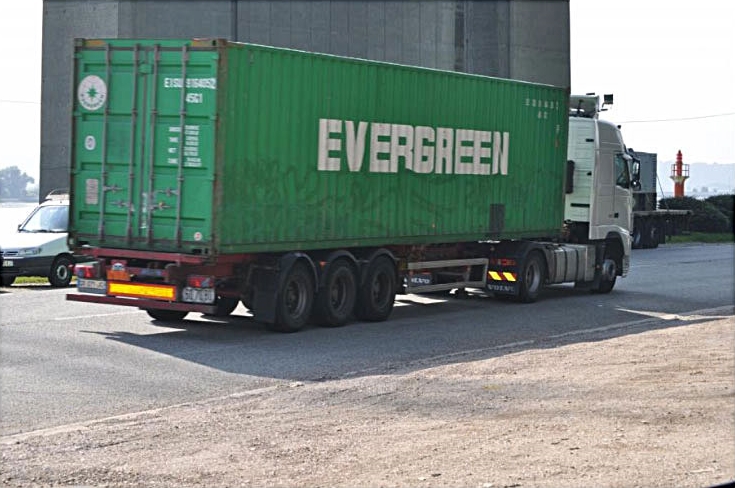

Twistlocks should be used to restrain containers to the body or frame of the vehicle or trailer.
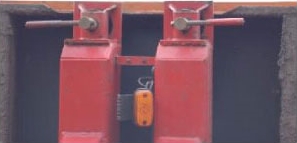
Use of loading equipment
All staff must be properly trained in the use of any loading equipment provided. Records should be kept of all training. All loading equipment should be maintained in good condition, and most will require regular servicing.
-trucks.jpg)
Types of load restraint:
Ratchet straps - This type of restraint is usually used for securing palletised goods or other products where the use of chains and tensioners would damage the goods.
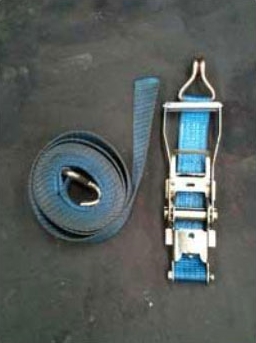
Chains and tensioners - According to EN 12195-3, chains used in transport are to be marked with a metal tag in the same way that webbing straps have identification labels. This type of restraint is used where heavy material such as steel girders or heavy plant machinery is being transported.
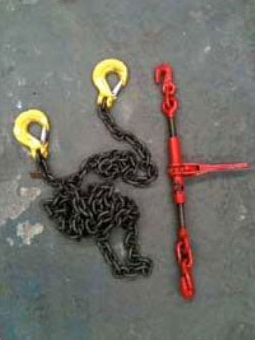
Ropes – Although extremely suitable for securing weather protection equipment such as sheets and tarpaulins, ropes are generally only used in conjunction with other types of load restraint to secure a load. They are seldom used nowadays as the sole restraint method because of the availability of better alternatives.